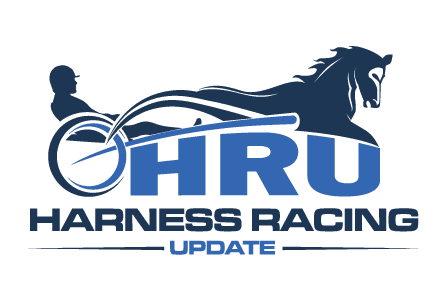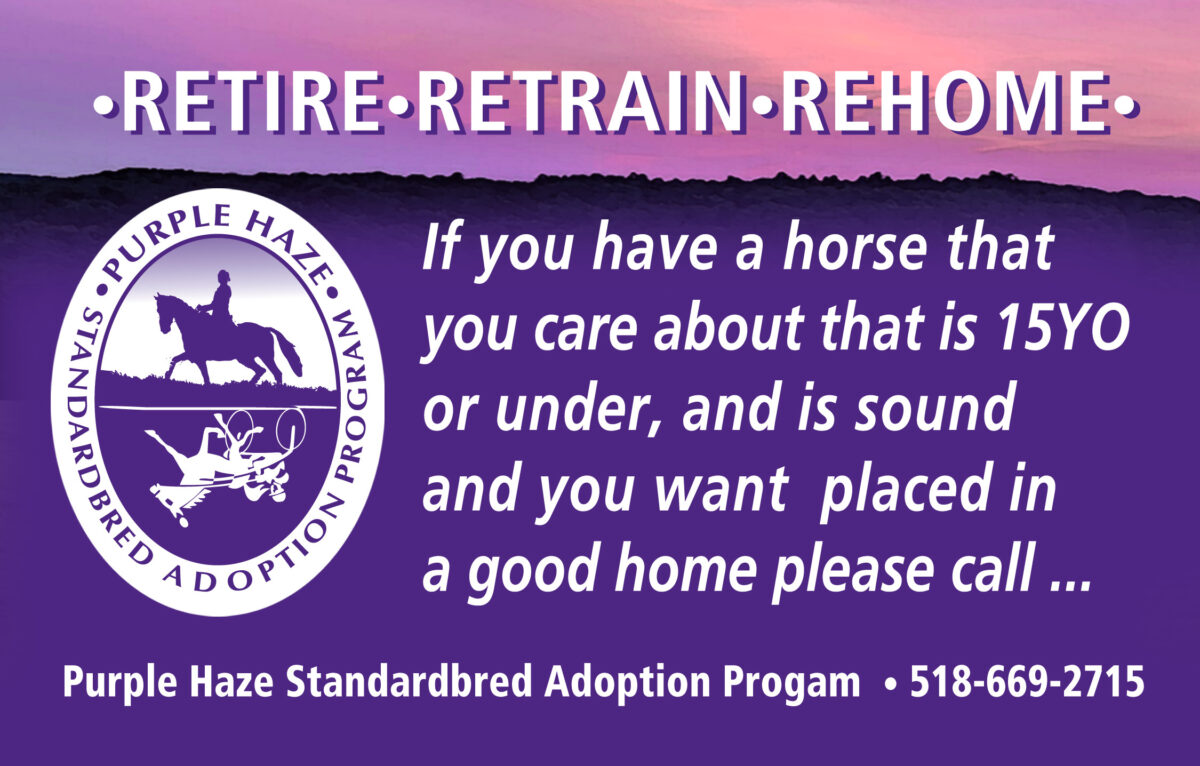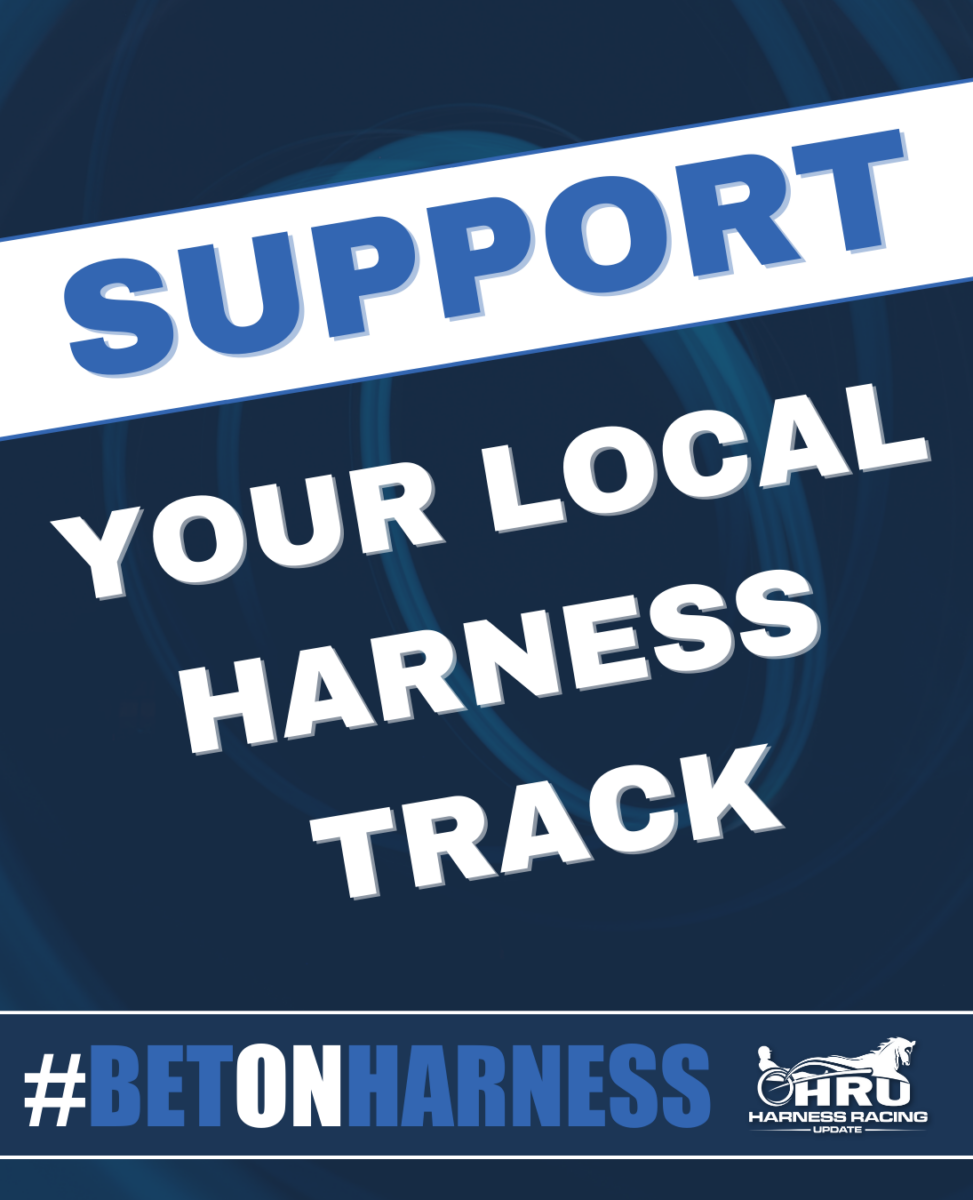Waiting out the winter and COVID-19
Top Truro Raceway trainer George Rennison talks 2019 awards and upcoming season.
by Melissa Keith
When George Rennison (Truro UTRS .294) was named last year’s “Top Dash Trainer over 100” starts at Truro Raceway, he was the winner of a match race against the Nova Scotia track’s only other candidate with that many starts, Paul Langille (Truro UTRS .281). Even so, Rennison, 42, admitted he was surprised by the honor, which was announced at Truro Raceway’s Feb. 15 award banquet. “It didn’t really seem like we were having that great a year,” he told HRU. “It kind of just peaked there, near the end. Throughout the year, it seemed like we were just kind of having an average year. The last month, or six weeks, we had a little spurt. It took us from an average year to a good year.”
His sense of surprise at earning the 2019 training title is because Rennison isn’t a man who chases awards or publicity. He’s a 20-plus-year veteran of the sport who has focused on the blue collar racing stock that comprises the lifeblood of harness racing in his home province. Rennison said he’s recently seen a major decline in this long-standing tradition.
“You look around the Maritimes: There’s not many racehorse stables. I mean, years ago, Gary MacDonald, Blair Laffin… A lot of the stables were racehorse guys. Now, everybody just seems to be training a few colts for some people with some money,” he said.
Rennison Racing integrates a few young stakes prospects with the stable’s seasoned older horses, a model that’s been working for George and family. His wife, Andrea, was named Truro Raceway’s 2019 Horsewoman of the Year, and shared Owner of the Year honors with son Ryder.
George said that his father, Albert, takes care of the horses every morning, then “goes home and has a coffee after feeding them.”
The barn currently has 10 horses awaiting their home track’s re-opening in April.
Truro Raceway general manager Kelly MacEachen said this week that “nothing right now” had been decided regarding the upcoming racing season, which was slated to begin April 10. All Canadian tracks have currently postponed live racing due to the COVID-19 pandemic.
“Two 2-year-olds, one 3-year-old [Anne With An E], and seven racehorses: Lively Freddie,Electric Syl, Distinctiv Rusty, Global Seelster, Seethelightsngo, Bettim Jenny, and Giant Slayer — we just got him a week or so ago,” said Rennison, adding that PEI horseman Jeff Lilley often sends horses to him.
“I’ve got a colt [Bettim Again] with Jeff right now and I’ve got Bettim Jenny [p, 6, 1:56.2f; $71,809],” Rennison said, naming Lilley homebreds owned by small regional racing partnerships.
The Truro Raceway conditioner said 2-year-old Bettim Again could become an Atlantic Sires Stakes performer to watch this season. “He’s a Malicious colt, a brother to Bettim Jackie [p, 4, 1:51.1f; $176,009 ]. We just brought him in a week or two ago. He could make a liar out of me, but I like him a lot right now.”
It would mean a lot to see Bettim Again succeed in stakes competition. Despite being a licensed trainer since 1996, George Rennison said he hasn’t developed a true stakes star. Early in his driving career, the protégé of Danny Romo and Butch Horne piloted one filly to three Atlantic Sires Stakes victories at three different tracks for owner/trainer Terry Osbourne. “When I first got my license, Flashy Family [p, 2, 2:00.1h; $29,907]. She made $30,000 as a 2-year old. That was probably one of the funner years that I drove.”
Rennison added that he’s moved increasingly into the training side of the game because catch drivers outperform trainer/drivers. “I started to realize I could put them in the right places but other people could get more out of them,” he said. “I think it’s a hands thing. I think it’s a thing you’ve either got or you don’t.”
Fortunately, 20-year-old Ryder Matthews Rennison has got the driving talent. His father noted he would like to see Ryder become a fully-licensed driver in 2020. “It’s working out pretty good, timing-wise. I’m getting out of the way,” he said with a grin. Ryder has participated in PEI’s matinee racing circuit and amateur races at Truro Raceway’s Hubtown Community Day, but previously lacked the duration of groom’s licensing needed to fulfill the requirements to become a driver.
The Rennisons are bringing back Distinctiv Rusty (p, 5, 1:55.2s; $62,097) this season, as the reigning Truro Raceway Horse of the Year seeks to build upon last year’s nine wins in 31 starts. The 9-year-old Rambaran—Winnees Luck (by Camluck) stallion concluded 2019 with a trio of victories, including a going-away 2:00.3h effort on closing night at his home track.
“He’s been a pretty nice horse,” said his trainer. “He’s bounced around and was probably better a couple of years ago, but there were better horses around the first year or two we had him. He was a real nice horse, 1-2-3 in the top class, every night. He’d go through ups and downs last year. When he was good, he was real good; when he was bad, not so much.”
Distinctiv Rusty is a particular favourite of Ryder, while Electric Syl (p,6, 1:56.0h; $67,617) is both a Raceway regular and Andrea Rennison’s personal pet.
“This is the eighth [year] I think for him. We got him when he was 4 and I think he’s 12 now,” said George. “He’s definitely the longest I’ve ever had one. He can feed himself. I don’t think he’s going anywhere.”
The family lost pacing mare Always Reese (p, 4, 1:53.1s; $57,788) in a claiming race at Charlottetown last Old Home Week. Racing stock which not long ago sold in the $2,000-$3,000 range is now priced from $6,000-$7,000, which the conditioner said makes it tougher to replenish the active horse population in the Maritimes.
The business of operating a racing stable in a small province poses an ongoing challenge. Trainer Rennison also works in building maintenance for Cobequid Housing, but the grandson of legendary horseman Clayton MacLeod remains devoted to the family tradition.
“We get a new [racehorse] whenever we can. It’s nice to freshen up the barn a little. It gets stale when it’s the same faces all the time,” he said, pointing out the regional impact of low purses and expensive racehorses. “You get the average horse making $10,000 to $12,000 a year — that’s almost the break-even point for somebody paying board. You shouldn’t have to have the best horse in the Maritimes to break even.”
Adding to the struggle for small stables based in the Maritimes is the lack of winter racing dates. There are no regional racetracks operational through the winter months anymore; the currently-dormant Red Shores Charlottetown played host to the final live cards until spring, back in January.
“I think we could go with less dates and not the standard shutdown,” said a frustrated Rennison. “There shouldn’t be a dark [period]. There should always be someplace open to go and race in the Maritimes, in my opinion… At one time, that’s what the cheap horses did, because all the better ones were shut down. It served the little guys a lot better, racing them in the winter, because your poorer horses moved up a class or two.”
He noted that the scarcity of racehorses across North America means that better Maritime stock commonly ends up in Ontario or the USA over the winter, while the remainder are sought out as road horses by Amish buyers. Local fractional ownership groups like Truro Raceway’s own Hubtown Horse Owners Club (launched to a sold-out membership in 2019) help bring in racehorses; Rennison and Paul Langille trained pacers Larjon Lachlan and Well Did for the Club last season, and Dave Carey and Bernard McCallum will train new Hubtown fractional horses in 2020. Even so, Rennison said it’s the independent racing stables which are really needed to create the full fields conducive to a solid wagering product. He would like to see three or four more at the Bible Hill backstretch, and is doing his part in the meantime. “We trained a bunch this week, in around :30,” he told HRU. “I don’t know how [Truro Raceway’s] horse population is going to hold up, but we’re trying to have ours ready, anyway.”
The alternative to selling — waiting for Truro to reopen for live racing in April — isn’t palatable to many owners.
“I have a hard job marketing a horse to an owner to race for six months and [be] down for six months,” he explained. “It’s hard enough for them to pay the bills when they’re racing, let alone standing in a stall.”
Rennison unexpectedly lost three horses from his barn last year: promising stakes colt Howmac Finale (3, 1:59.0h; $12,388) broke a bone and was euthanized; 5-year-old mare Woodmere Finesse (p, 5, 1:55.2f; $58,332) was found deceased in her stall at morning feeding time; a boarder’s 30-year-old pleasure horse succumbed to the ravages of age. Their deaths made 2019 a sad year for the family-run stable.
“People don’t always see it, but the way you care for them relates to what you get out of them on the track,” he said.
And that’s not more awards, he added. “We had enough [2019] awards banquets to last me a lifetime! Andrea is a Standardbred Canada director, so we went to the O’Briens, and then we went to the Cape Breton banquet there too. It was good fun; it’s just more dress-up than I’m used to.”
His goals for the 2020 season?
“Nothing specific. I think we were hovering around 40 wins; it would be nice to break 50 wins.”
In fact, Rennison recorded a lifetime-best 47 training victories from 217 purse starts last year, so there’s a good chance that he’ll reach that milestone this season.

















